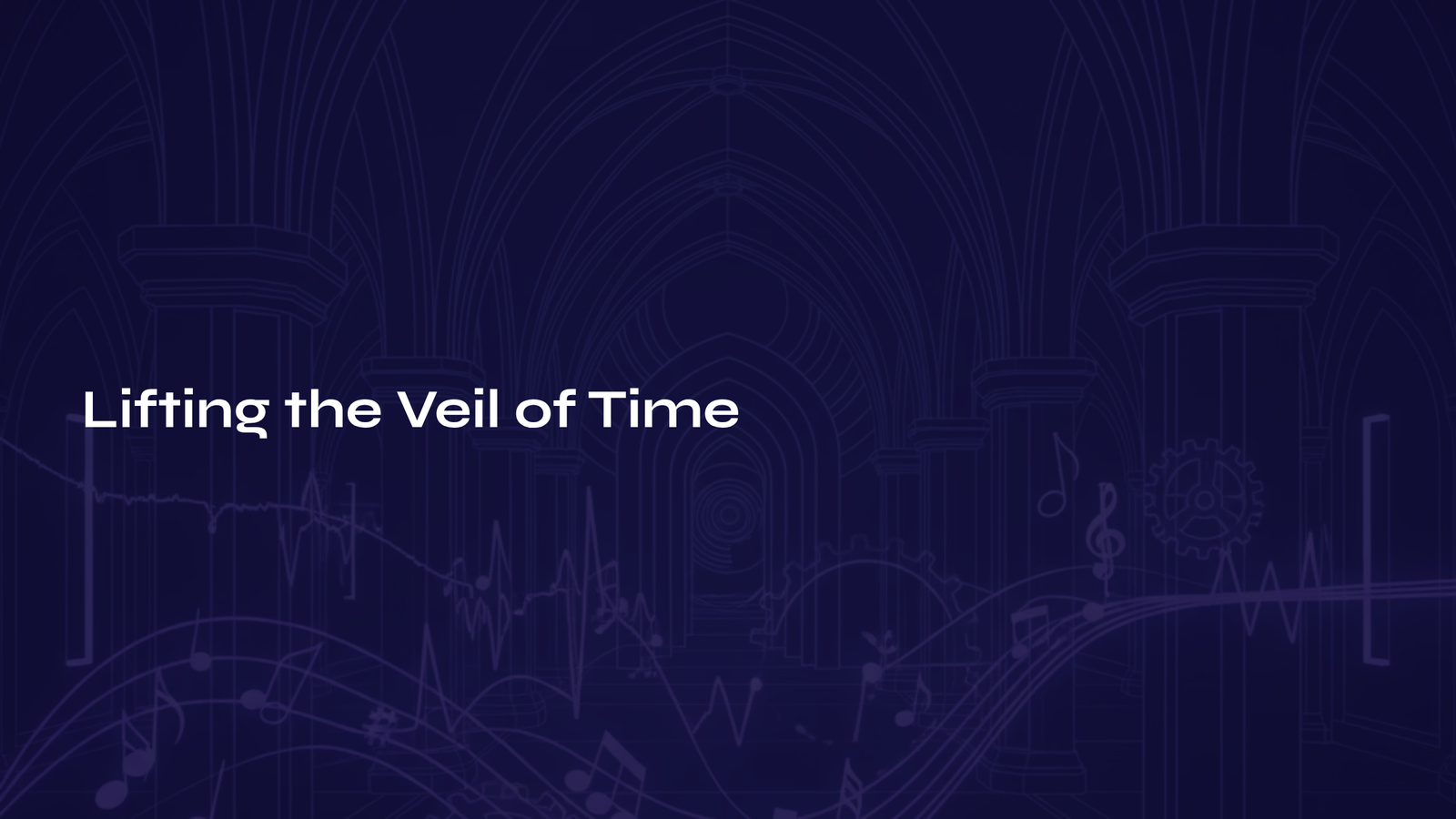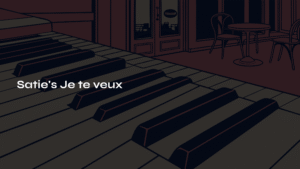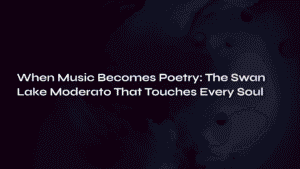Table of Contents
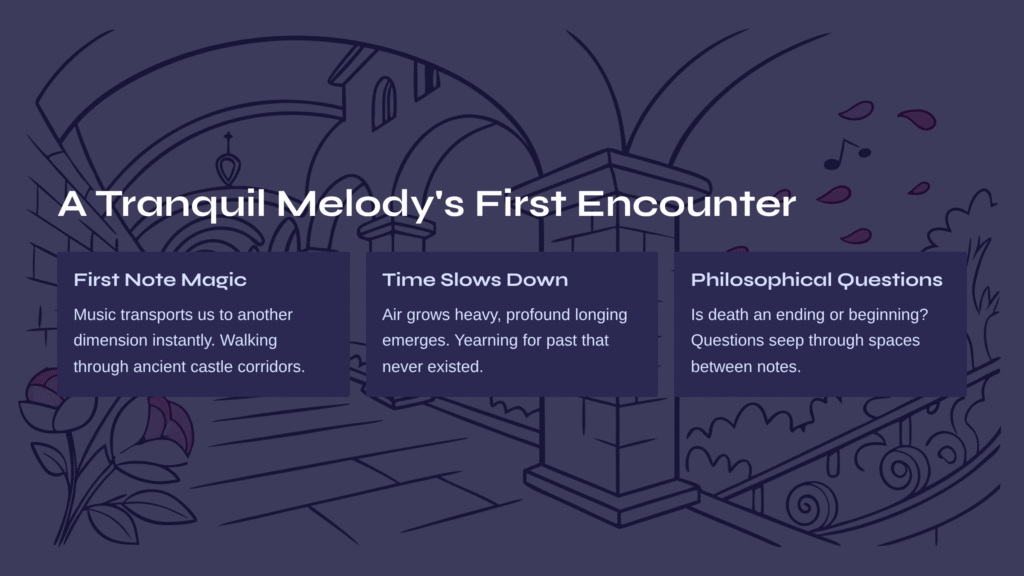
A Tranquil Melody’s First Encounter
Some music transports us to another dimension from its very first note. Ravel’s “Pavane for a Dead Princess” is precisely such a work. When I first heard this piece—whose title alone stirs something deep in the chest—I felt as though I was walking alone through the corridors of an ancient castle.
The moment the melody begins to flow, the air suddenly grows heavy and time slows down. It wasn’t sadness exactly, but something closer to profound longing. A tender yearning for a past that never existed, for someone I’d never met.
The specialness of this piece transcends mere melodic beauty. The sonic world Ravel created compels us to reconsider time itself. Is death truly an ending, or perhaps another form of beginning? Such philosophical questions seep through the spaces between the notes.
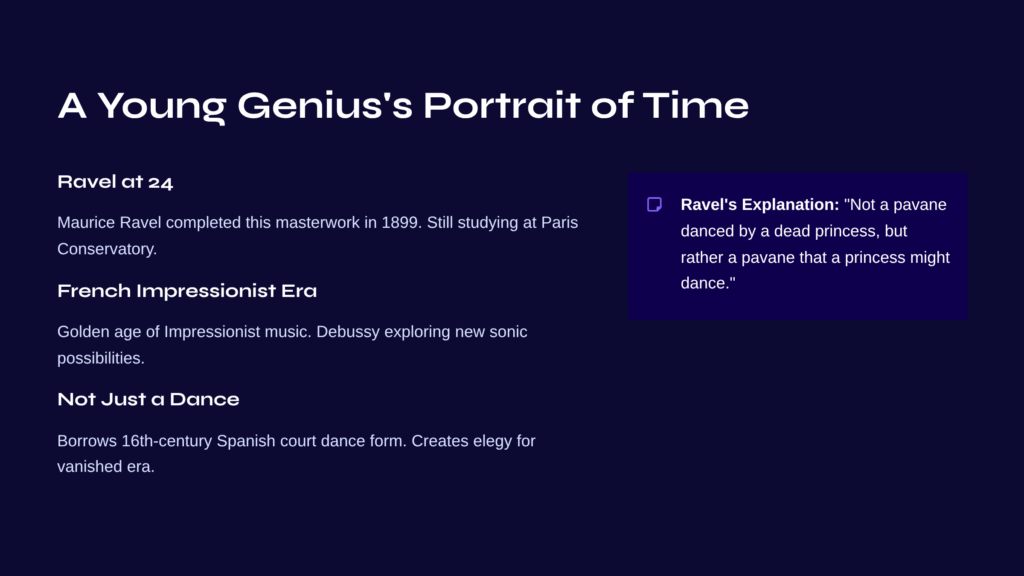
A Young Genius’s Portrait of Time
Maurice Ravel completed this work in 1899, at the tender age of 24. How could such a young composer, still studying at the Paris Conservatory, create something so mature and profound?
The French musical scene of that era was experiencing the golden age of Impressionist music. While Debussy was exploring new sonic possibilities, Ravel was discovering his own unique palette. “Pavane for a Dead Princess” represents the fruition of that exploration.
As the title suggests, this piece borrows the form of the pavane, a 16th-century Spanish court dance. But Ravel’s pavane is no simple dance piece. It’s closer to an elegy—for some princess who exists only in memory, or for an era already vanished.
Ravel himself later explained that this wasn’t “a pavane danced by a dead princess, but rather a pavane that a princess might dance.” It’s a longing for an ideal realm that never existed—that’s the very heart of this work.
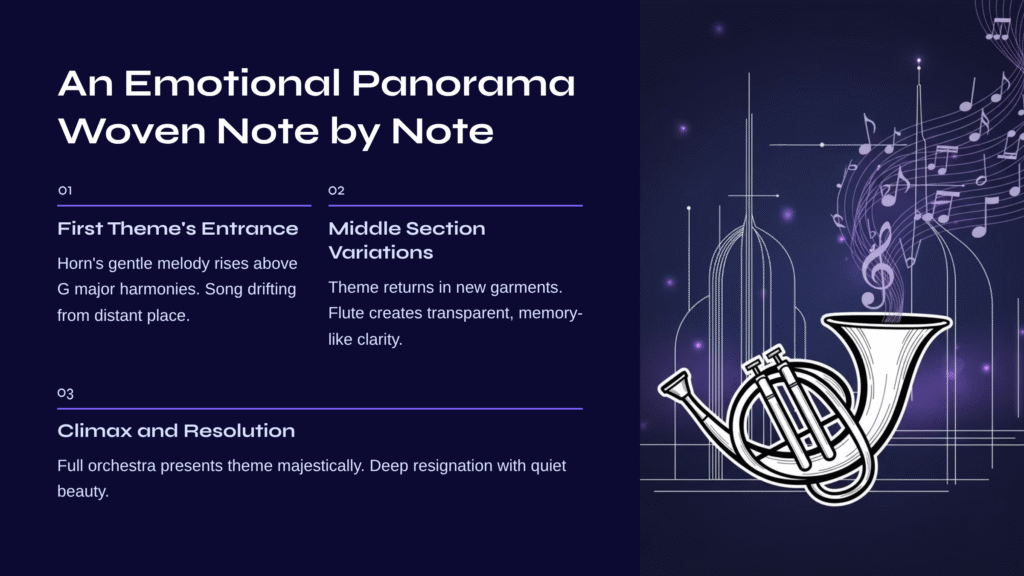
An Emotional Panorama Woven Note by Note
The First Theme’s Entrance – A Song of the Soul
The piece opens with the horn’s gentle melody. This melody, rising above G major’s tranquil harmonies, sounds like someone’s song drifting from a distant place. The theme is simple, yet the emotional density contained within is surprisingly profound.
Listening to this main theme, I often find myself imagining a garden at sunset. A scene where rose fragrance lingers faintly in the air, and the sound of flowing fountain water breaks the silence. Music possesses this remarkable power to create visual imagery.
The Middle Section’s Variations – Layers of Memory
Each time the theme returns, Ravel dresses it in new garments. Sometimes in the warm tones of strings, sometimes in the lyrical colors of woodwinds. The same melody, yet conveying different emotions each time.
Particularly when the flute takes up the theme, the music becomes even more transparent. It feels like images in memory gradually becoming clearer. The pizzicato strings accompanying at this moment create an effect like drops of time falling one by one.
Climax and Quiet Resolution – The Beauty of Resignation
At the piece’s climactic moment, Ravel employs the full orchestra to present the theme majestically. But this grandeur isn’t a victory cry. It’s closer to deep resignation—and the quiet beauty found within that resignation.
Then the piece returns to its initial tranquility. Even after the final note fades, the afterglow lingers long. Isn’t this the true power of genuine artwork?
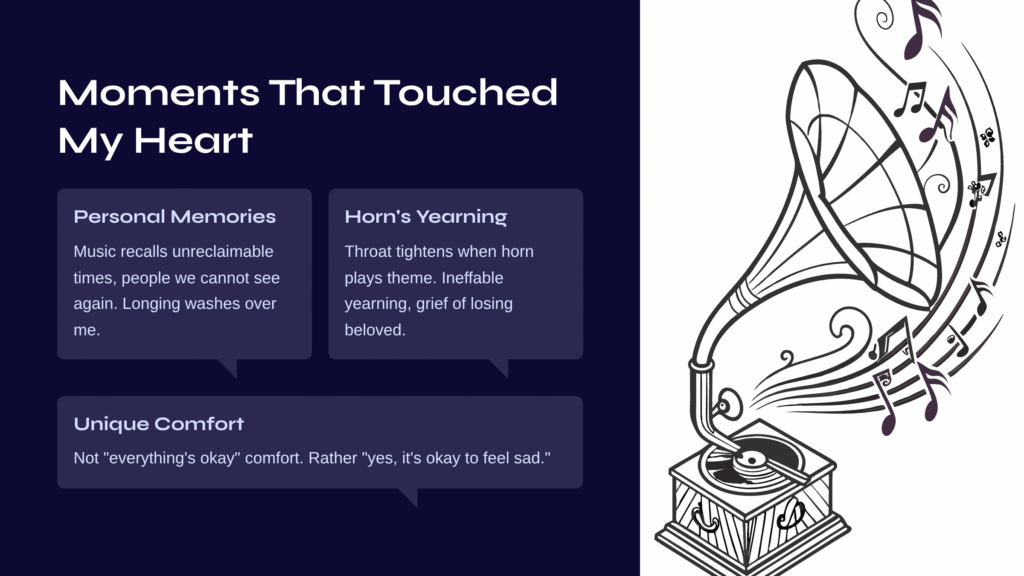
Moments That Touched My Heart
While listening to this piece, I often find myself recalling certain moments from my own life. Times that cannot be reclaimed, people who cannot be seen again—longing for these washes over me along with the music.
Especially when the horn plays the theme, my throat always tightens. There’s an ineffable yearning contained in that sound. The grief of losing someone beloved, or the emotions of moments when cherished dreams had to be abandoned—all transmitted directly.
The comfort Ravel’s music provides is unique. It’s not the comfort that says “everything’s okay,” but rather “yes, it’s okay to feel sad.” Sometimes feeling sorrow completely can be the first step toward healing—this music teaches us that truth.
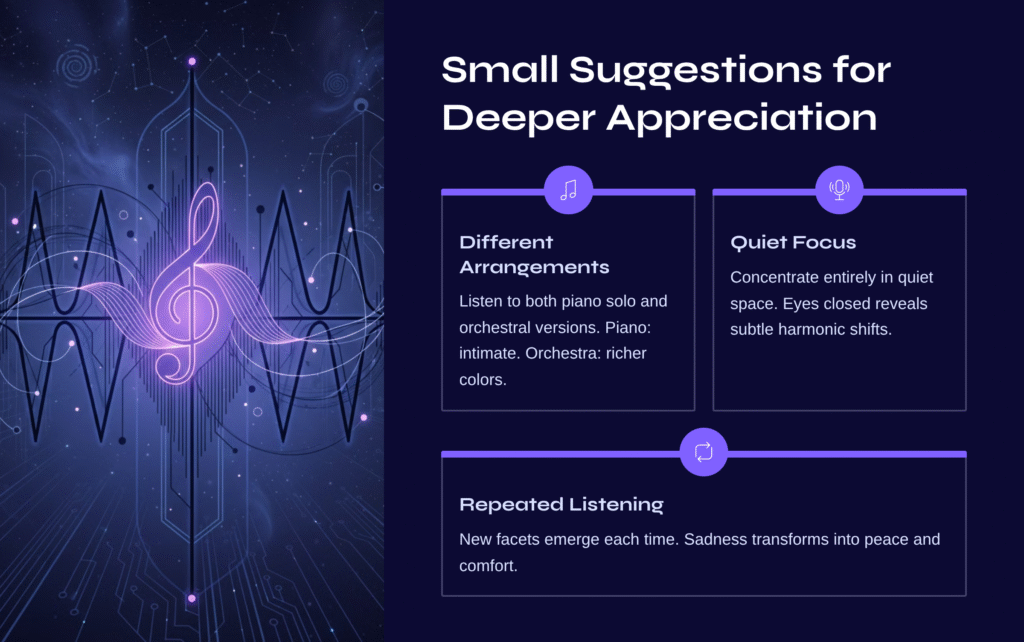
Small Suggestions for Deeper Appreciation
First Suggestion – Listen to Different Arrangements
“Pavane for a Dead Princess” was originally composed as a piano solo, later orchestrated by Ravel himself. I recommend listening to both versions. The piano version conveys more intimate, personal emotions, while the orchestral version offers richer colors and grandeur.
Second Suggestion – Focus in a Quiet Space
This piece deserves better than background listening. In a quiet space, preferably with eyes closed, concentrate entirely on the music. You’ll be able to sense how meticulously calculated the subtle changes in melody and harmonic color shifts are.
Third Suggestion – The Value of Repeated Listening
This piece reveals new facets with each hearing. What initially might have seemed purely sad could, after several listens, come to feel more like a source of peace and comfort. Our relationship with music changes and deepens over time.
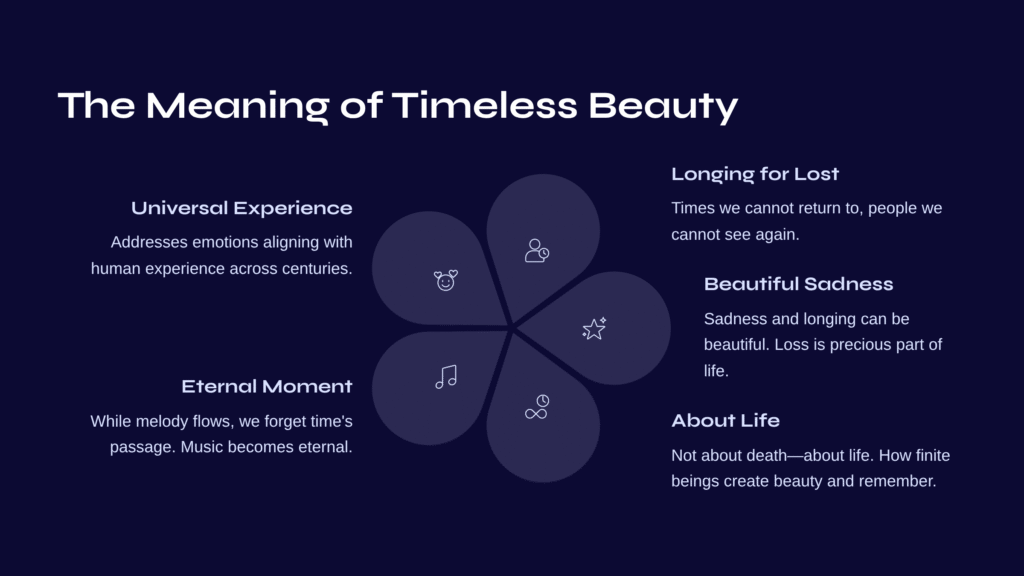
The Meaning of Timeless Beauty
Why does Ravel’s “Pavane for a Dead Princess” continue to be beloved more than a century after its creation? It’s because the emotions this piece addresses align with universal human experience.
We all live carrying longing for what we’ve lost. Times we cannot return to, people we cannot see again, dreams we couldn’t fulfill. Ravel perfectly translated these universal human emotions into the language of music.
And this piece conveys an important message to us: that sadness and longing can also be beautiful, that experiences of loss are also precious parts of our lives. Music purifies these complex emotions and returns them to us transformed.
Ultimately, “Pavane for a Dead Princess” isn’t about death—it’s about life. It contains deep reflection on how we finite beings create beauty, love, and remember.
While this melody flows, we momentarily forget time’s passage. And in that moment, music becomes eternal.
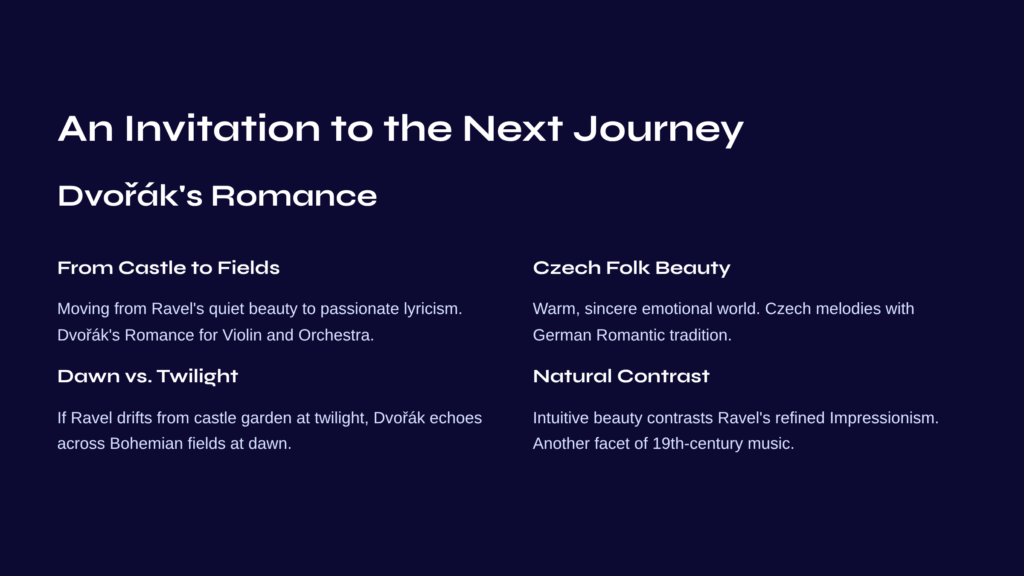
An Invitation to the Next Journey – Dvořák’s Romance
Moving away from the quiet beauty of “Pavane for a Dead Princess,” let’s now journey to a world that’s more passionate yet equally lyrical. Dvořák’s “Romance for Violin and Orchestra in F minor, Op. 11” possesses a different charm from Ravel’s elegance.
If Ravel’s pavane is like a melody drifting from an ancient castle garden at twilight, Dvořák’s Romance resembles a love song echoing across Bohemian fields at dawn. Experience the warm and sincere emotional world created when the violin’s sweet melody interweaves with the orchestra.
This work, where Czech folk melodic beauty combines exquisitely with German Romantic tradition, offers intuitive and natural beauty that contrasts with Ravel’s refined Impressionism. How about experiencing another facet of late 19th-century European music through this brief yet perfect miniature?
